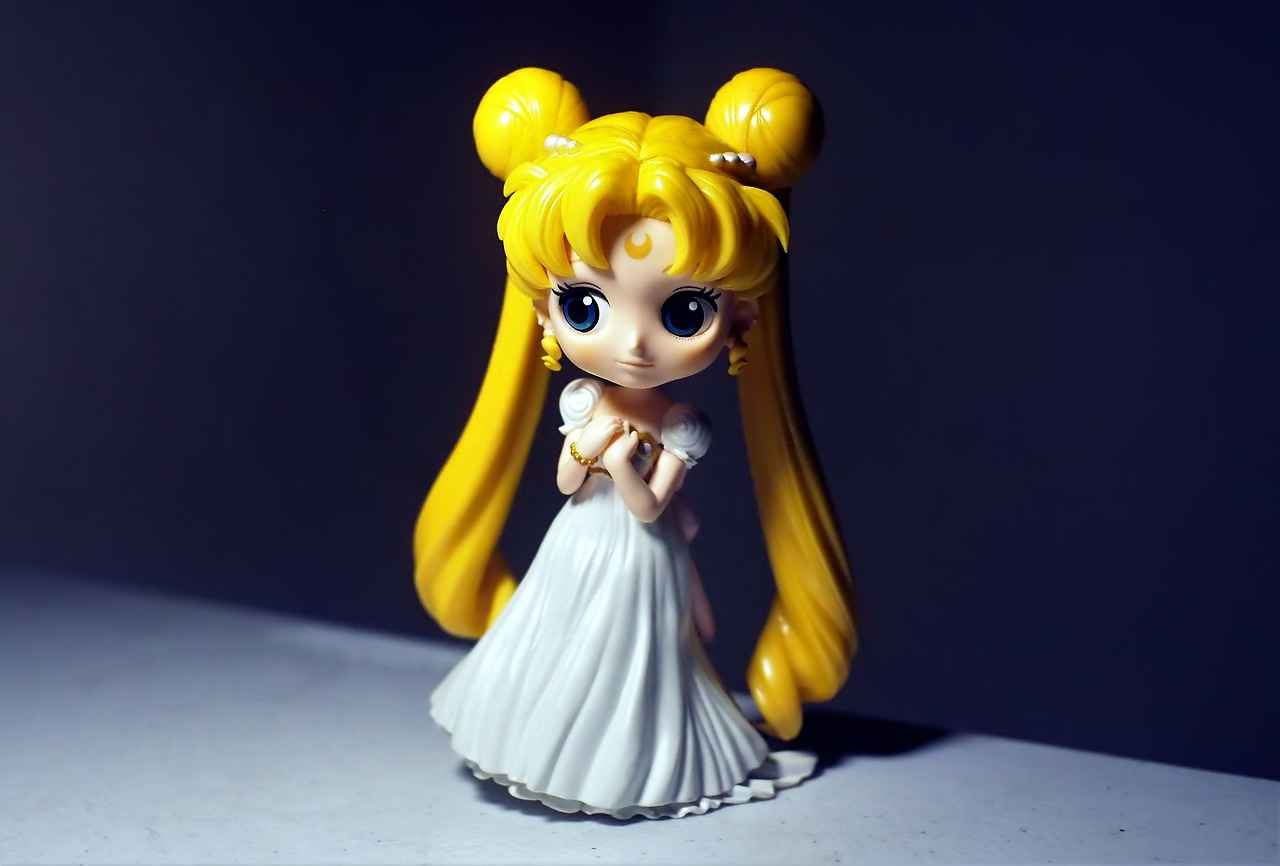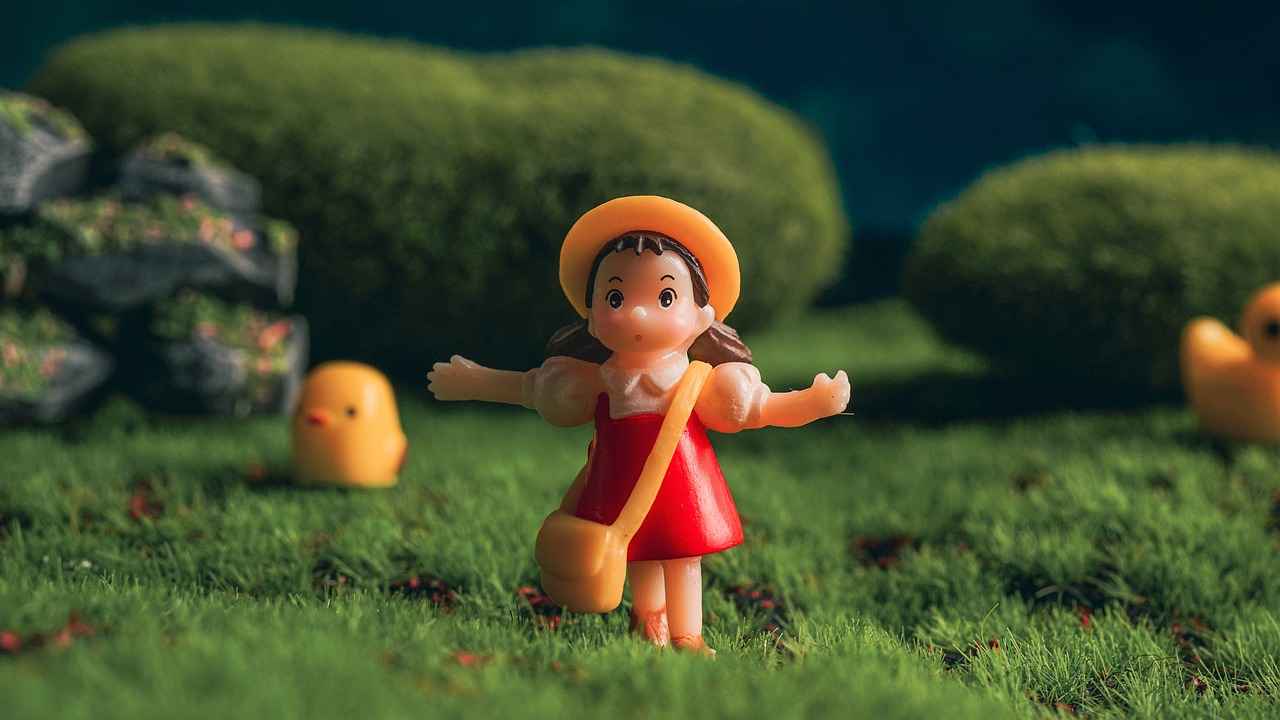This article delves into the intriguing character development of Ryuko Matoi in the anime Kill la Kill. As the series unfolds, Ryuko’s journey becomes a profound exploration of her struggles, motivations, and the relatable experiences that make her a standout hero in the anime landscape.
Understanding Ryuko Matoi’s Background
To fully appreciate Ryuko’s character, one must consider her tumultuous upbringing. Raised in a challenging environment, her quest for justice is deeply rooted in personal loss and a relentless desire to uncover the truth about her father’s mysterious death. This backstory sets the foundation for her motivations throughout the series.
The Role of Satsuki Kiryuin in Ryuko’s Journey
The character of Satsuki Kiryuin plays a crucial role in Ryuko’s narrative arc. Their complex relationship evolves significantly, serving as a catalyst for Ryuko’s growth and her understanding of justice, power, and the essence of friendship.
- Initial Conflict: The fierce rivalry between Ryuko and Satsuki ignites the series, prompting Ryuko to confront her own identity and purpose.
- Symbolism of Their Battles: Their conflicts symbolize the struggle between personal freedom and authoritarian control, reflecting broader societal themes.
- Resolution: Over time, their relationship transforms from adversaries to allies, highlighting themes of reconciliation and growth.
Impact of Ryuko’s Allies on Her Journey
Ryuko’s friends and allies are instrumental in her development. Their support and unique abilities help her navigate the challenges she faces, reinforcing the importance of teamwork in her quest for justice.
Thematic Elements of Justice and Revenge
At the heart of Ryuko’s journey are themes of justice and revenge. Her pursuit often blurs the lines between right and wrong, inviting viewers to question the true nature of justice.
- Consequences of Seeking Revenge: Ryuko’s quest for vengeance against Satsuki’s mother illustrates the personal costs associated with revenge.
- Redefining Justice: Ultimately, Ryuko’s experiences lead her to redefine justice, emphasizing empathy and understanding over mere retribution.
Why Ryuko Resonates with Fans
Ryuko’s relatability stems from her flaws and struggles. Her emotional depth allows fans to connect with her character on a personal level, making her a beloved figure in the anime community.
- Flaws That Make Her Real: Ryuko’s imperfections, such as her impulsiveness, mirror real-life challenges, fostering a strong emotional connection with her audience.
- Empowerment Through Vulnerability: Her journey highlights that vulnerability can be a source of strength, inspiring fans to embrace their own insecurities.
In conclusion, Ryuko Matoi’s character development in Kill la Kill is a profound journey of self-discovery and justice. Her struggles, relationships, and growth resonate deeply with audiences, making her one of the most relatable heroes in anime.
Kill la Kill,
Ryuko’s Journey for Justice: How She Became Kill la Kill’s Most Relatable Hero
This article explores Ryuko Matoi’s character development in Kill la Kill, highlighting her struggles, motivations, and relatability, making her a standout hero in anime.
Understanding Ryuko Matoi’s Background
Ryuko Matoi’s backstory is essential to understanding her motivations. Raised in a tumultuous environment, her quest for justice stems from personal loss and the desire to uncover her father’s mystery.
The Role of Satsuki Kiryuin in Ryuko’s Journey
Satsuki Kiryuin is a pivotal character in Ryuko’s narrative. Their complex relationship evolves throughout the series, influencing Ryuko’s growth and understanding of justice, power, and friendship.
- Initial Conflict Between Ryuko and Satsuki: The initial clash serves as a catalyst for Ryuko’s character development.
- Symbolism of Their Battles: Their battles symbolize the struggle between personal freedom and authoritarian control.
- Resolution and Mutual Understanding: Ryuko and Satsuki’s relationship transforms from adversaries to allies.
Impact of Ryuko’s Allies on Her Journey
Ryuko’s friends and allies play a significant role in her development. Their support helps her navigate challenges and reinforces the importance of teamwork in her quest for justice.
Thematic Elements of Justice and Revenge
Justice and revenge are central themes in Ryuko’s journey. Her pursuit often blurs the lines between right and wrong, prompting viewers to question the true nature of justice.
- Consequences of Seeking Revenge: Ryuko’s quest illustrates the personal costs of vengeance.
- Redefining Justice Through Personal Growth: Ryuko’s character arc emphasizes empathy and understanding over mere retribution.
Why Ryuko Resonates with Fans
Ryuko’s relatability stems from her flaws, struggles, and growth. Fans connect with her emotional depth, making her a beloved character in the anime community and beyond.
- Flaws That Make Her Real: Ryuko’s imperfections mirror real-life challenges.
- Empowerment Through Vulnerability: Her journey emphasizes that vulnerability is a form of strength.
highlighting her struggles, motivations, and relatability, making her a standout hero in anime.
Ryuko’s Journey for Justice: How She Became Kill la Kill’s Most Relatable Hero
This article explores Ryuko Matoi’s character development in Kill la Kill, highlighting her struggles, motivations, and relatability, making her a standout hero in anime.
Understanding Ryuko Matoi’s Background
Ryuko Matoi’s backstory is essential to understanding her motivations. Raised in a tumultuous environment, her quest for justice stems from personal loss and the desire to uncover her father’s mystery.
The Role of Satsuki Kiryuin in Ryuko’s Journey
Satsuki Kiryuin is a pivotal character in Ryuko’s narrative. Their complex relationship evolves throughout the series, influencing Ryuko’s growth and understanding of justice, power, and friendship.
Initial Conflict Between Ryuko and Satsuki
The initial clash between Ryuko and Satsuki serves as a catalyst for Ryuko’s character development. This rivalry sets the stage for deeper themes of identity and purpose in the series.
Symbolism of Their Battles
The battles between Ryuko and Satsuki symbolize the struggle between personal freedom and authoritarian control, reflecting broader societal issues and enhancing the narrative’s depth.
Resolution and Mutual Understanding
As the series progresses, Ryuko and Satsuki’s relationship transforms from adversaries to allies, showcasing themes of reconciliation and growth, which resonate with viewers.
Impact of Ryuko’s Allies on Her Journey
Ryuko’s friends and allies play a significant role in her development. Their support and unique abilities help her navigate challenges and reinforce the importance of teamwork in her quest for justice.
Thematic Elements of Justice and Revenge
Justice and revenge are central themes in Ryuko’s journey. Her pursuit often blurs the lines between right and wrong, prompting viewers to question the true nature of justice.
Consequences of Seeking Revenge
Ryuko’s quest for revenge against Satsuki’s mother, Lady Satsuki, illustrates the personal costs of vengeance. This journey invites viewers to reflect on the moral implications of revenge.
Redefining Justice Through Personal Growth
Ultimately, Ryuko’s character arc leads her to redefine justice based on her experiences, emphasizing empathy and understanding over mere retribution, making her journey relatable and impactful.
Why Ryuko Resonates with Fans
Ryuko’s relatability stems from her flaws, struggles, and growth. Fans connect with her emotional depth, making her a beloved character in the anime community and beyond.
Flaws That Make Her Real
Ryuko’s imperfections, such as her impulsiveness and emotional struggles, mirror real-life challenges, allowing fans to see themselves in her character and fostering a strong emotional connection.
Empowerment Through Vulnerability
Ryuko’s journey emphasizes that vulnerability is a form of strength. Her ability to confront her fears and insecurities resonates with fans, inspiring them to embrace their own vulnerabilities.
Understanding Ryuko Matoi’s Background
Ryuko Matoi’s journey is one marked by tragedy and resilience. Born into a world filled with chaos, her early life was shaped by the absence of her father, which left an indelible mark on her psyche. This personal loss ignited a fierce determination within her to seek justice, not only for herself but for those who have been wronged. The quest to uncover the truth about her father’s mysterious disappearance becomes the driving force behind her actions throughout the series.
Raised in a tumultuous environment, Ryuko faced numerous challenges that tested her strength and resolve. The harsh realities of her upbringing fostered a sense of independence and a burning desire to challenge the status quo. Her struggles resonate with many viewers, making her a relatable hero in the anime landscape.
As she navigates the complexities of her world, Ryuko encounters various characters that shape her understanding of justice. Each relationship, particularly with her rival-turned-ally, Satsuki Kiryuin, plays a crucial role in her evolution. This dynamic illustrates the duality of friendship and rivalry, highlighting how personal connections can influence one’s path toward justice.
Moreover, Ryuko’s journey is not just about vengeance; it is about self-discovery. Through her battles and interactions, she learns that justice is not merely about retribution but also about understanding and empathy. This realization adds depth to her character, making her struggles and triumphs all the more impactful.
In conclusion, Ryuko Matoi’s background is a tapestry of loss, strength, and growth. Her relentless pursuit of justice, fueled by personal tragedy, allows viewers to connect with her on a profound level. This complexity is what makes her one of the most compelling characters in Kill la Kill.
The Role of Satsuki Kiryuin in Ryuko’s Journey
Satsuki Kiryuin plays a crucial role in shaping Ryuko Matoi’s character throughout the series Kill la Kill. Their relationship is marked by intense conflict, yet it serves as a profound catalyst for Ryuko’s growth and understanding of complex themes such as justice, power, and friendship.
Initially, Ryuko and Satsuki are portrayed as fierce adversaries, with their rivalry igniting a series of confrontations that challenge Ryuko’s beliefs and motivations. This initial conflict is not merely a battle of strength; it symbolizes the deeper struggle between individuality and authoritarianism. Ryuko’s quest for vengeance against Satsuki’s mother intertwines her personal experiences with broader societal issues, making their encounters rich with symbolism.
As the series progresses, the nature of their relationship transforms significantly. The evolution from enemies to allies showcases a journey of mutual understanding. Through these experiences, Ryuko learns to appreciate the complexities of power dynamics and the importance of collaboration. This transformation is pivotal, as it highlights the potential for reconciliation and growth, resonating deeply with viewers who may face similar conflicts in their own lives.
The battles between Ryuko and Satsuki also serve as a narrative device that reflects the internal struggles faced by both characters. Each confrontation forces Ryuko to confront her own motivations and the implications of her quest for justice, ultimately leading to a more nuanced understanding of what it means to fight for one’s beliefs.
In conclusion, Satsuki Kiryuin’s influence on Ryuko Matoi is profound and multifaceted. Their relationship not only propels Ryuko’s character development but also enriches the overarching narrative of Kill la Kill, making it a compelling exploration of justice, power, and the complexities of human relationships.

Initial Conflict Between Ryuko and Satsuki
The initial confrontation between Ryuko Matoi and Satsuki Kiryuin is a pivotal moment in the anime Kill la Kill. This clash not only ignites their rivalry but also serves as a crucial catalyst for Ryuko’s character development. Through this intense battle, viewers are introduced to Ryuko’s fierce determination and her unyielding quest for justice, which are deeply rooted in her past.
As Ryuko faces off against Satsuki, who represents authority and control, the conflict highlights the contrasting ideals of freedom versus oppression. Ryuko’s struggle against Satsuki is not just a physical battle; it symbolizes her internal fight for identity and purpose. The dynamic between the two characters evolves throughout the series, showcasing their complex relationship that oscillates between rivalry and respect.
This initial clash also sets the stage for deeper themes that permeate the series, such as identity and the search for one’s place in the world. Ryuko’s journey is not merely about defeating an enemy; it is about understanding herself and the motivations that drive her actions. The rivalry with Satsuki forces Ryuko to confront her own beliefs and values, leading to significant personal growth.
Moreover, the battles between Ryuko and Satsuki are laden with symbolism. Each encounter reflects broader societal issues, such as the struggle against authoritarianism and the fight for personal freedom. These themes resonate with viewers, making their conflict relatable and impactful.
In conclusion, the initial conflict between Ryuko and Satsuki is a defining moment that shapes Ryuko’s character arc. It propels her on a journey of self-discovery, highlighting the importance of understanding one’s identity and purpose in the face of adversity.

Symbolism of Their Battles
The intense confrontations between Ryuko Matoi and Satsuki Kiryuin serve as more than mere physical clashes; they are a profound representation of the conflict between personal freedom and authoritarian control. This struggle mirrors broader societal issues, allowing viewers to engage with the narrative on multiple levels.
At the heart of Ryuko’s journey is her quest for justice, which is often at odds with Satsuki’s authoritarian approach. Ryuko embodies the spirit of rebellion, fighting against a system that imposes strict rules and expectations. This battle for autonomy reflects real-world struggles against oppressive regimes, making the story resonate with audiences who value individual rights.
Conversely, Satsuki represents the need for order and structure, albeit through harsh and uncompromising methods. Her character challenges Ryuko’s ideals, forcing her to confront the complexities of justice and authority. This dynamic creates a rich narrative tapestry, where each battle is not just a fight for victory, but a philosophical debate on the nature of power and freedom.
The symbolism extends beyond their individual motivations. Each clash showcases the emotional and psychological turmoil both characters face. As they engage in combat, viewers witness their internal struggles, reflecting the duality of human nature—where the desire for freedom can often lead to chaos, while the pursuit of order can suppress individuality.
Ultimately, the battles between Ryuko and Satsuki invite audiences to question their own beliefs about authority and freedom. Through their evolving relationship, the series highlights the importance of understanding and empathy, suggesting that true strength lies in the ability to reconcile differences rather than perpetuate conflict.
Resolution and Mutual Understanding
is a pivotal theme in the anime Kill la Kill, particularly in the evolving relationship between Ryuko Matoi and Satsuki Kiryuin. Initially, these two characters are positioned as fierce adversaries, each embodying contrasting ideals of justice and power. However, as the narrative unfolds, their dynamic transforms significantly.
Ryuko, driven by her quest for vengeance and truth, initially sees Satsuki as an enemy. This conflict is not merely personal; it represents a broader struggle against authoritarianism and oppression. Satsuki, on the other hand, is portrayed as a strong leader, committed to her vision of order through control. Their battles are intense, showcasing not only their physical prowess but also their ideological differences.
As the series progresses, the layers of their rivalry begin to peel away, revealing deeper motivations and vulnerabilities. Both characters are shaped by their pasts—Ryuko by her father’s mysterious death and Satsuki by her upbringing in a strict, oppressive environment. This shared experience of loss and the quest for identity becomes a bridge between them.
Through a series of confrontations and revelations, Ryuko and Satsuki start to understand each other’s perspectives. This resolution is not just about defeating a common enemy; it symbolizes a journey towards mutual respect and understanding. The transformation from adversaries to allies highlights the importance of empathy and collaboration in overcoming personal and societal challenges.
Ultimately, their relationship serves as a powerful narrative device that resonates with viewers. It emphasizes that even the most profound conflicts can lead to growth and reconciliation. The themes of resolution and mutual understanding not only enrich the characters but also provide a compelling commentary on the nature of relationships in a complex world.
Impact of Ryuko’s Allies on Her Journey
In Kill la Kill, Ryuko Matoi’s journey is profoundly shaped by her friends and allies. Their contributions are not merely supportive; they are essential to her growth as a character and her quest for justice. Each ally brings unique abilities and perspectives that help Ryuko navigate the tumultuous world she inhabits.
One of the most significant allies is Mako Mankanshoku. Mako’s unwavering loyalty and comedic relief provide Ryuko with emotional support during her darkest moments. Despite her own challenges, Mako’s positive attitude and fierce friendship serve as a reminder of the importance of camaraderie. Their bond highlights how friendship can empower individuals to face adversities with renewed strength.
Another crucial ally is Uzu Sanageyama, whose skills in combat and strategy complement Ryuko’s fighting style. Uzu’s journey from adversary to ally illustrates the theme of redemption and the importance of teamwork. His evolution emphasizes that even those who start on opposing sides can unite for a common cause, reinforcing Ryuko’s understanding of justice.
Furthermore, the Rebel Army plays a pivotal role in Ryuko’s development. This diverse group showcases various abilities and backgrounds, embodying the essence of teamwork. Their collective efforts during battles teach Ryuko valuable lessons about trust and collaboration. Each member contributes to her understanding that justice is not a solitary pursuit but a shared responsibility.
In conclusion, Ryuko’s allies are more than just companions; they are integral to her transformation. Their unique strengths and unwavering support not only help her confront external challenges but also aid in her internal struggle for identity and purpose. This emphasis on teamwork and the power of friendship resonates deeply with viewers, making Ryuko’s journey relatable and impactful.
Thematic Elements of Justice and Revenge
In the intricate narrative of Kill la Kill, the themes of justice and revenge are profoundly interwoven into the journey of Ryuko Matoi. As she navigates her tumultuous path, these themes challenge her understanding of morality and force viewers to grapple with the complexities of right and wrong.
Ryuko’s quest for justice is ignited by a deep personal loss, driving her to seek vengeance against those she holds responsible. However, this desire for revenge often leads her to question the very nature of justice. Is her pursuit justified, or does it merely perpetuate a cycle of violence? This internal conflict is a recurring motif in her character development.
Consequences of Seeking Revenge
As Ryuko confronts her enemies, particularly Lady Satsuki, the consequences of her revenge-driven actions become apparent. Each battle she engages in not only tests her strength but also her resolve. The emotional toll of her choices raises critical questions about the costs of vengeance. Can one truly find peace through retribution, or does it only lead to further suffering?
Redefining Justice Through Personal Growth
Throughout her journey, Ryuko’s experiences lead her to a profound realization. Justice is not merely about punishing the guilty; it is about understanding and empathy. By the end of the series, she learns to redefine justice, moving beyond her initial thirst for revenge to embrace a more compassionate approach. This transformation is what makes her journey relatable to many viewers, as it reflects the struggles of finding one’s moral compass in a chaotic world.
In conclusion, Ryuko Matoi’s path is not just a tale of revenge; it is a complex exploration of justice that resonates with audiences. Her evolution from a vengeful spirit to a figure embodying empathy and understanding serves as a powerful reminder of the importance of personal growth and the multifaceted nature of justice.
Consequences of Seeking Revenge
In the intricate narrative of Kill la Kill, Ryuko Matoi’s pursuit of vengeance against Lady Satsuki serves as a powerful exploration of the personal costs of revenge. This journey not only shapes her character but also invites the audience to reflect on the moral implications of such a path.
Initially, Ryuko’s desire for revenge is fueled by a deep sense of loss and betrayal. The quest to confront Lady Satsuki is not merely about retribution; it is a search for identity and understanding. As Ryuko battles her adversary, she grapples with intense emotions that often cloud her judgment, leading to a series of escalating conflicts.
Throughout her journey, the consequences of her actions become increasingly evident. Each confrontation with Satsuki not only heightens the stakes of their rivalry but also reveals the emotional toll that vengeance takes on Ryuko. She finds herself caught in a cycle of anger and despair, questioning whether her pursuit of revenge is truly justified or if it is causing her more harm than good.
Moreover, Ryuko’s interactions with her allies serve as a crucial counterbalance to her vengeful instincts. They remind her of the importance of empathy and understanding, urging her to reconsider her motivations. This aspect of her journey emphasizes that while the desire for revenge can be powerful, it often leads to isolation and suffering.
Ultimately, Ryuko’s quest prompts viewers to ponder the true nature of justice. Is revenge a means to achieve it, or does it merely perpetuate a cycle of violence? Ryuko’s character arc illustrates that the path to healing lies not in vengeance, but in forgiveness and growth. By confronting her pain and choosing a different path, she emerges as a more relatable and complex hero.

Redefining Justice Through Personal Growth
is a pivotal theme in Ryuko Matoi’s journey in Kill la Kill. Throughout the series, Ryuko evolves from a character driven by vengeance to one who understands the complexities of justice. This transformation is not only essential for her personal growth but also resonates deeply with the audience.
Initially, Ryuko’s quest for justice is fueled by a burning desire for revenge against those she holds responsible for her father’s death. This desire blinds her to the broader implications of her actions, pushing her into a cycle of violence and conflict. However, as she confronts various challenges and forms meaningful relationships, particularly with Satsuki Kiryuin, Ryuko begins to recognize that justice is more than just retribution.
Her experiences teach her that true justice involves empathy and understanding. The pivotal moments in her journey allow her to see the humanity in her adversaries, transforming her perspective on conflict. For instance, her battles with Satsuki initially represent a struggle for power but ultimately evolve into a deeper understanding of their shared burdens and the societal structures that dictate their lives.
As Ryuko embraces her vulnerabilities and learns to rely on her friends, she starts to redefine her concept of justice. She realizes that seeking revenge only perpetuates a cycle of pain, while understanding and compassion can lead to healing and growth. This epiphany is crucial, as it allows her to forge alliances and work towards a common goal rather than being consumed by her past.
In conclusion, Ryuko’s character arc in Kill la Kill illustrates the profound impact of personal growth on her understanding of justice. By emphasizing empathy over retribution, Ryuko becomes a relatable hero whose journey encourages viewers to reflect on their own perceptions of justice and the importance of compassion in resolving conflicts.
Why Ryuko Resonates with Fans
Ryuko Matoi, the protagonist of Kill la Kill, stands out as a character who embodies complexity and depth. Her relatability is deeply rooted in her flaws, struggles, and growth, which resonate with audiences on multiple levels. Fans are drawn to her journey, finding pieces of their own experiences reflected in her character.
- Flaws That Make Her Real: Ryuko’s imperfections, such as her impulsiveness and emotional volatility, mirror real-life challenges. These flaws allow fans to see themselves in her character, fostering a strong emotional connection.
- Empowerment Through Vulnerability: Throughout her journey, Ryuko learns that vulnerability is not a weakness but a form of strength. Her ability to confront her fears and insecurities resonates with fans, inspiring them to embrace their own vulnerabilities.
- The Struggle for Identity: Ryuko’s quest for justice is intertwined with her search for identity. This universal theme of self-discovery is relatable to anyone who has faced challenges in understanding who they are.
- Emotional Depth: Ryuko’s emotional journey, filled with anger, sadness, and ultimately acceptance, is a testament to the human experience. Fans connect with her on an emotional level, as they see her navigate the complexities of life.
As Ryuko confronts her adversaries and her own inner demons, she embodies the struggle many face in their lives. Her journey is not merely about revenge or justice, but about understanding oneself and the world around them. This profound character development is what makes Ryuko a beloved figure in the anime community and beyond.
Ultimately, Ryuko Matoi represents the struggle for authenticity and the quest for meaning in a chaotic world. Her story encourages fans to embrace their flaws and strive for personal growth, making her a relatable and inspiring hero.
Flaws That Make Her Real
Ryuko Matoi, the fierce protagonist of Kill la Kill, embodies a complex blend of strength and vulnerability that resonates deeply with audiences. Her imperfections, such as her impulsiveness and emotional struggles, serve as a mirror reflecting real-life challenges. This relatability allows fans to see themselves in her character, fostering a strong emotional connection that transcends the screen.
One of Ryuko’s most prominent flaws is her impulsiveness. Often driven by her emotions, she acts without fully considering the consequences of her actions. This trait not only leads her into conflict but also highlights her humanity. Many viewers can relate to the feeling of acting on instinct, especially when faced with overwhelming emotions. Ryuko’s journey illustrates that while impulsiveness can lead to mistakes, it is also a natural part of being human.
Additionally, Ryuko’s emotional struggles play a significant role in her character development. Throughout the series, she grapples with feelings of anger, loss, and uncertainty, which are universal experiences. Her vulnerability in expressing these emotions makes her more relatable, allowing fans to connect with her on a personal level. By showcasing her struggles, the series emphasizes that it is okay to feel lost or overwhelmed at times.
Moreover, Ryuko’s journey is not just about her flaws but also about her growth. As she confronts her imperfections, she learns valuable lessons about friendship, trust, and the importance of seeking help. This evolution resonates with viewers who may be navigating their own challenges, reinforcing the idea that growth often comes from embracing one’s vulnerabilities.
In conclusion, Ryuko Matoi’s flaws are not just obstacles; they are integral to her character and her journey. By portraying a hero who grapples with real-life challenges, Kill la Kill allows fans to find strength in their own imperfections. Ryuko’s story is a powerful reminder that it is our flaws that make us truly human.

Empowerment Through Vulnerability
In the world of Kill la Kill, Ryuko Matoi’s journey serves as a profound reminder that vulnerability is not a weakness, but rather a powerful form of strength. Her character arc illustrates how embracing one’s fears and insecurities can lead to personal growth and resilience. This theme resonates deeply with fans, encouraging them to acknowledge and accept their own vulnerabilities.
Throughout the series, Ryuko confronts numerous challenges that force her to face her inner demons. For instance, her relentless pursuit of justice is often clouded by feelings of inadequacy and fear of failure. However, it is through these struggles that Ryuko learns to harness her vulnerabilities as sources of strength. By openly confronting her fears, she not only grows as an individual but also inspires those around her.
Moreover, Ryuko’s relationships with her friends and allies play a crucial role in her understanding of vulnerability. The support she receives from her companions allows her to realize that she does not have to face her challenges alone. This sense of community reinforces the idea that being vulnerable is part of the human experience, and it is okay to rely on others for support.
In addition, Ryuko’s journey encourages fans to reflect on their own lives. Many individuals struggle with self-doubt and the fear of being judged for their weaknesses. Ryuko’s story demonstrates that embracing these feelings can lead to empowerment. By sharing her vulnerabilities, she creates a space for others to do the same, fostering a sense of connection and understanding.
Ultimately, Ryuko Matoi’s evolution in Kill la Kill serves as a powerful reminder that vulnerability is a vital component of strength. Her ability to confront her fears not only shapes her character but also inspires fans to embrace their own journeys toward self-acceptance and empowerment.
